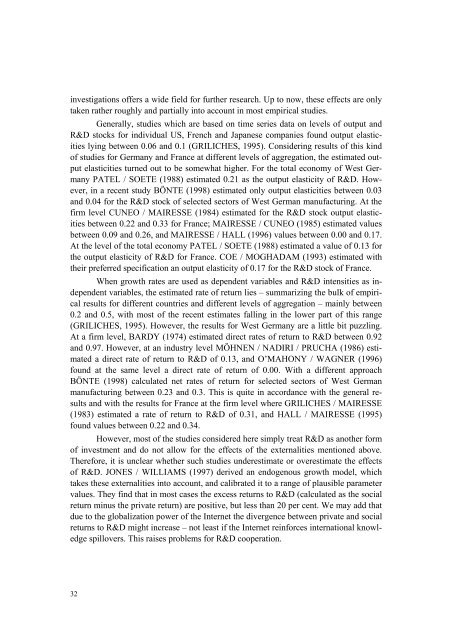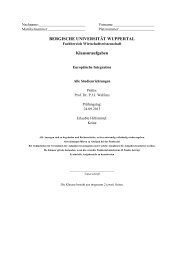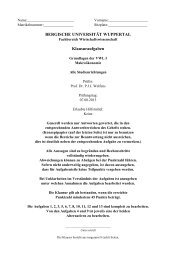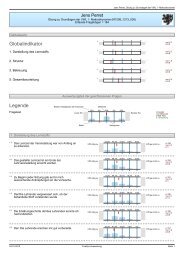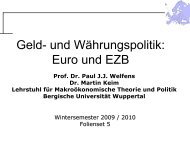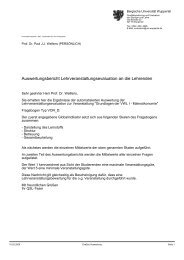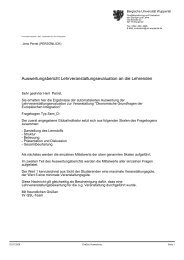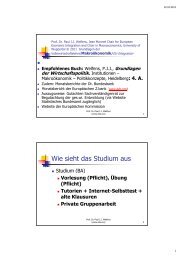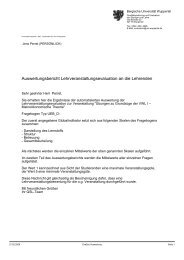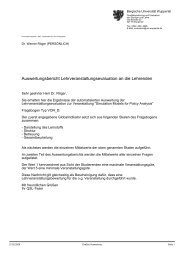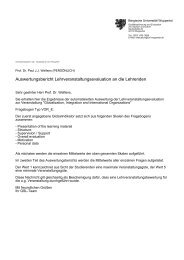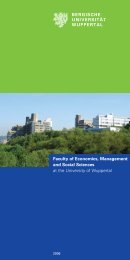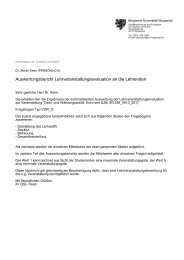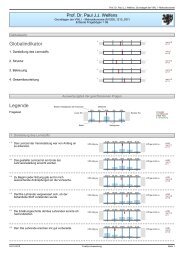UNIVERSITÄT POTSDAM - Prof. Dr. Paul JJ Welfens
UNIVERSITÄT POTSDAM - Prof. Dr. Paul JJ Welfens
UNIVERSITÄT POTSDAM - Prof. Dr. Paul JJ Welfens
You also want an ePaper? Increase the reach of your titles
YUMPU automatically turns print PDFs into web optimized ePapers that Google loves.
investigations offers a wide field for further research. Up to now, these effects are only<br />
taken rather roughly and partially into account in most empirical studies.<br />
Generally, studies which are based on time series data on levels of output and<br />
R&D stocks for individual US, French and Japanese companies found output elasticities<br />
lying between 0.06 and 0.1 (GRILICHES, 1995). Considering results of this kind<br />
of studies for Germany and France at different levels of aggregation, the estimated output<br />
elasticities turned out to be somewhat higher. For the total economy of West Germany<br />
PATEL / SOETE (1988) estimated 0.21 as the output elasticity of R&D. However,<br />
in a recent study BÖNTE (1998) estimated only output elasticities between 0.03<br />
and 0.04 for the R&D stock of selected sectors of West German manufacturing. At the<br />
firm level CUNEO / MAIRESSE (1984) estimated for the R&D stock output elasticities<br />
between 0.22 and 0.33 for France; MAIRESSE / CUNEO (1985) estimated values<br />
between 0.09 and 0.26, and MAIRESSE / HALL (1996) values between 0.00 and 0.17.<br />
At the level of the total economy PATEL / SOETE (1988) estimated a value of 0.13 for<br />
the output elasticity of R&D for France. COE / MOGHADAM (1993) estimated with<br />
their preferred specification an output elasticity of 0.17 for the R&D stock of France.<br />
When growth rates are used as dependent variables and R&D intensities as independent<br />
variables, the estimated rate of return lies – summarizing the bulk of empirical<br />
results for different countries and different levels of aggregation – mainly between<br />
0.2 and 0.5, with most of the recent estimates falling in the lower part of this range<br />
(GRILICHES, 1995). However, the results for West Germany are a little bit puzzling.<br />
At a firm level, BARDY (1974) estimated direct rates of return to R&D between 0.92<br />
and 0.97. However, at an industry level MÖHNEN / NADIRI / PRUCHA (1986) estimated<br />
a direct rate of return to R&D of 0.13, and O’MAHONY / WAGNER (1996)<br />
found at the same level a direct rate of return of 0.00. With a different approach<br />
BÖNTE (1998) calculated net rates of return for selected sectors of West German<br />
manufacturing between 0.23 and 0.3. This is quite in accordance with the general results<br />
and with the results for France at the firm level where GRILICHES / MAIRESSE<br />
(1983) estimated a rate of return to R&D of 0.31, and HALL / MAIRESSE (1995)<br />
found values between 0.22 and 0.34.<br />
However, most of the studies considered here simply treat R&D as another form<br />
of investment and do not allow for the effects of the externalities mentioned above.<br />
Therefore, it is unclear whether such studies underestimate or overestimate the effects<br />
of R&D. JONES / WILLIAMS (1997) derived an endogenous growth model, which<br />
takes these externalities into account, and calibrated it to a range of plausible parameter<br />
values. They find that in most cases the excess returns to R&D (calculated as the social<br />
return minus the private return) are positive, but less than 20 per cent. We may add that<br />
due to the globalization power of the Internet the divergence between private and social<br />
returns to R&D might increase – not least if the Internet reinforces international knowledge<br />
spillovers. This raises problems for R&D cooperation.<br />
32


